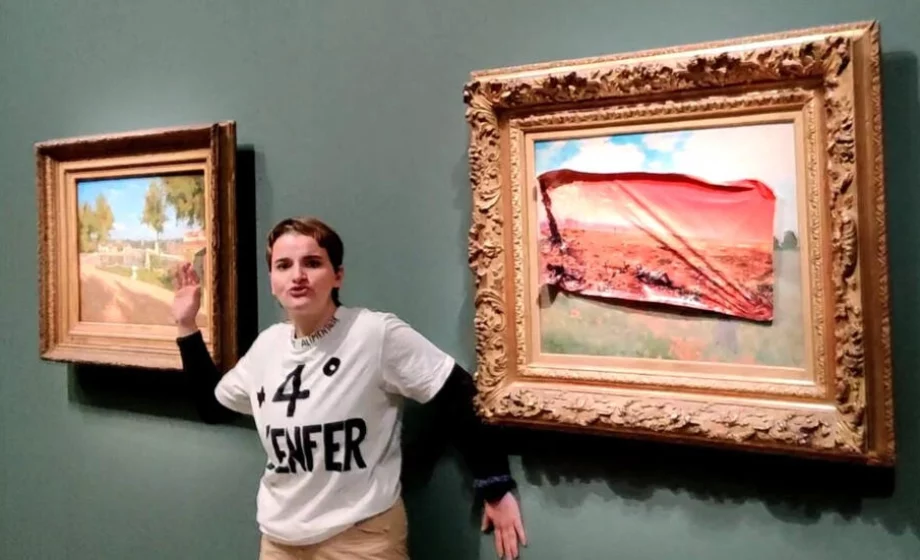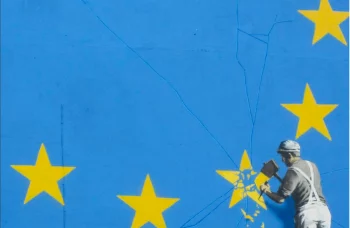The prevalence of painting-based protests has become a norm in the art world. Most often centred around environmental activist groups such as Just Stop Oil and those adjacent to the Extinction Rebellion movement, these are often harmless (and often ineffectual) calls to attention and support. Most recently a protestor has acted on the recurring target of Monet with his painting Poppies at Argenteuil.
This past week at the Musée d’Orsay in Paris, an activist associated with the French group Riposte Alimentaire (Food Response) approached Poppies at Argenteuil, swiftly pasted a hellish red landscape over the lush floral landscape, then affixed themselves to the wall with an adhesive—a common tactic for such demonstrations. “This nightmarish image awaits us if no alternative is put in place,” they stated in their protest, as reported by The Guardian. They were arrested shortly after the incident.
Riposte Alimentaire seeks to strike ecological and climate change anchored by the goal of global food security. They’ve been one of the many organizations staging protests such as this, including one last month at the Louvre. The fine arts world has been one of the primary stages for these actions, perhaps because of the sheer volume of money that flows through these often accessible places of presentation or perhaps because there is a higher chance of standing before those who hold similar values.
Whatever the impetus, Riposte Alimentaire has certainly drawn attention once again with their demonstration on Poppies at Argenteuil. But the question always remains the same: has there been any changes stemming from the attention these groups garner? Social disruption is a powerful tool, and perhaps the attention and awareness alone hold value. But as far as the world at large is concerned, it keeps on burning.





